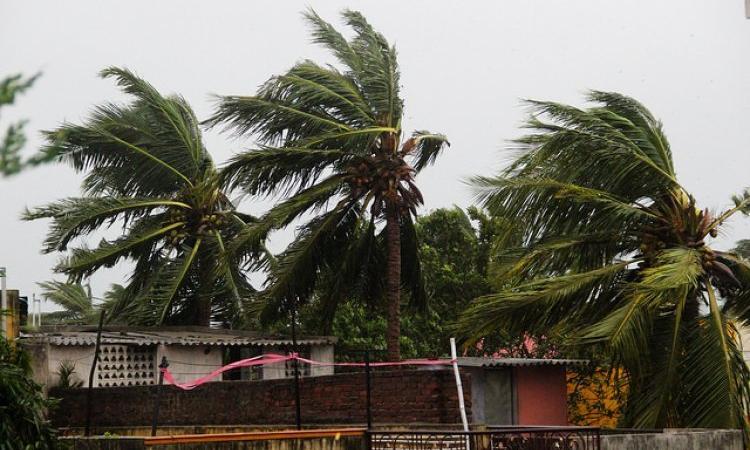
Cyclone Amphan causes widespread destruction in West Bengal
The strongest cyclone since 1982, Cyclone Amphan has caused severe destruction in southern districts of West Bengal, Kolkata and Sunderbans. Making a landfall with a wind intensity of 165-175 kilometres per hour, gusting up to 185 kmph, the cyclone has damaged houses, mud huts, uprooted trees, electric poles which have disrupted power and water supply in several cyclone-hit parts of the state. The Chief Minister Mamata Banerjee has described the situation as more than a national calamity and put the estimated loss at more than Rs 1 lakh crore while stating that more than six crore people have been affected by the cyclone.
The cyclone has also left thousands of acres of land inundated with saline water, virtually rendering the land unfit for cultivation for several years to come.
(Hindustan Times, Outlook India, India Climate Dialogue)
Heatwave alert: IMD issues red warning for north India states
As the temperature continues to rise in most of the country, the Indian Meteorological Department (IMD) has warned of a heatwave that would predominate most north Indian states and parts of Maharashtra and Telangana over the next five days. With the temperature likely to oscillate between 46-48 degrees Celsius in all the core heatwave states minus Uttar Pradesh, the weather department has issued the first red warning for heatwave this summer. Relief is expected only after May 28 as a western disturbance is likely to bring light rainfall. (NDTV)
High water levels in reservoirs posing a challenge for dam management
According to the Central Water Commission, 123 major reservoirs in the country have been filled upto 165 percent of the 10 year average. Along with this, the India Meteorological Department (IMD) has forecasted a normal monsoon this year, which has led to the fear of reservoir-induced floods among experts.
As per Himanshu Thakkar, coordinator at South Asian Network of Dams, Rivers and People (SANDRP), high water levels in dams just before the onset of the monsoon is likely to pose a big problem for dam management authorities. The floods in Kerala in 2018 and massive floods in both Maharashtra and Karnataka in 2019 are examples of reservoir-induced floods.
(The Economic Times)
First wave of floods in Assam affects nearly 10,000
Heavy rainfall and thundershowers have caused the first wave of floods in Assam affecting Sonitpur, Darrang and Goalpara districts in lower Assam. Along with this, flood situation in Lakhimpur district of Upper Assam has been worsened due to continuous release of water by the Neepco’s Ranganadi project. Nearly 10,801 people from 46 villages across the four districts have been affected by the flash floods and over five lakh hectare croplands have been swamped in these floods. As per the meteorological department heavy rains are likely to occur at most places in Arunachal Pradesh, Assam and Meghalaya and at many places in Nagaland, Manipur, Mizoram and Tripura. (NDTV, Telegraph India)
Disaster monitoring centre identifies 211 flood prone spots in the city
The Karnataka State Natural Disaster Monitoring Centre (KSNDMC) has identified 211 vulnerable spots in the city that are prone to flooding. Out of the 211 vulnerable spots, 58 have been categorised as sensitive while the remaining 153 as moderately sensitive. The flood prone spots have been identified based on a digital elevation model that has been created on the basis of historical data on frequently flooded areas, satellite terrain mapping, and data on black spots (junctions that get water logged) identified by traffic police. All this was overlaid on the GIS platform to identify the vulnerable spots. To ensure free flow of water, the civic body had taken up desilting of stormwater drains while KSNDMC had installed 28 water level sensors in the stormwater drains to get real-time data. (The Hindu)
This is a roundup of important news published between May 19 - 25, 2020. Also read policy matters this week. ++++
/articles/cyclone-amphan-wreaks-havoc-west-bengal